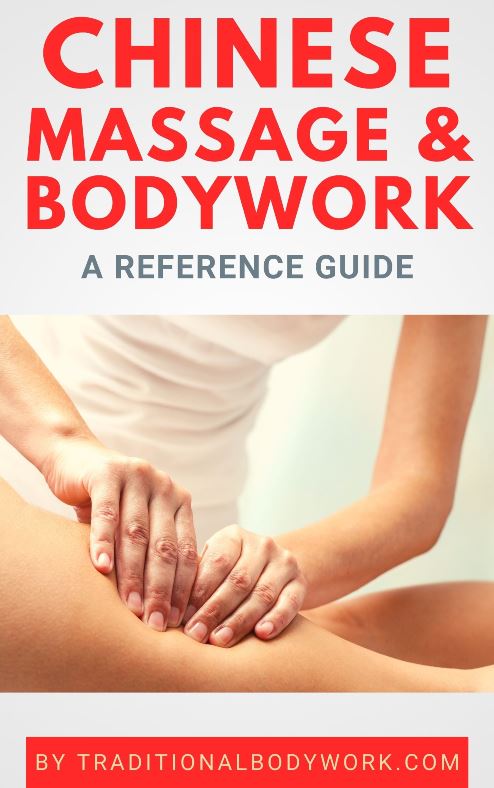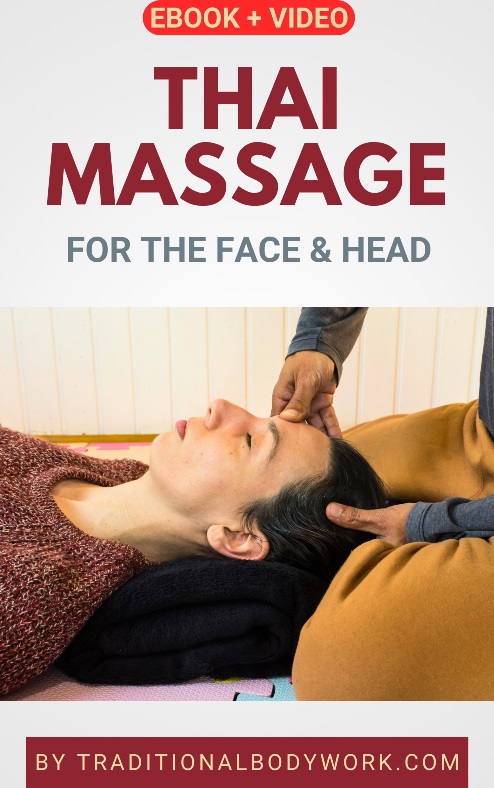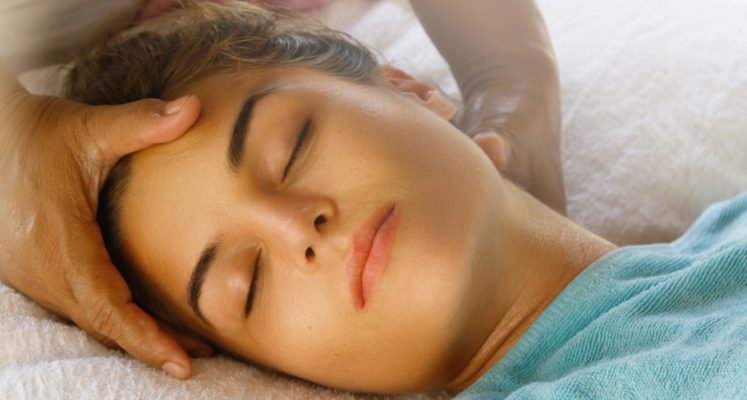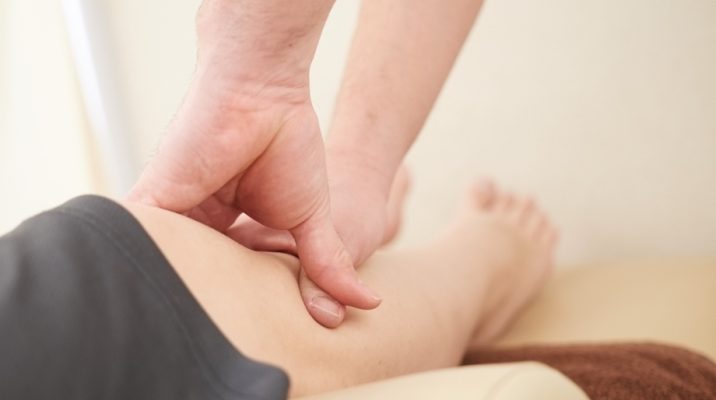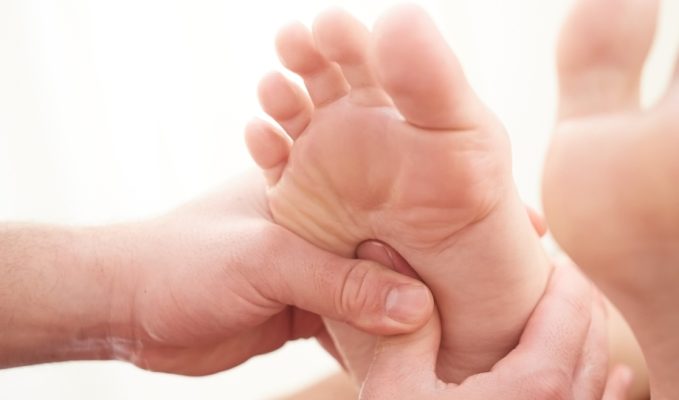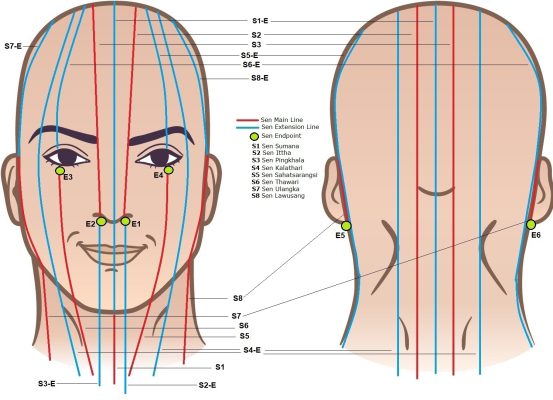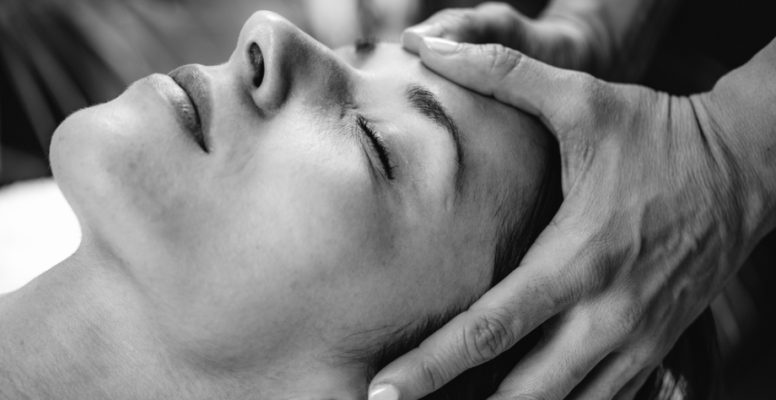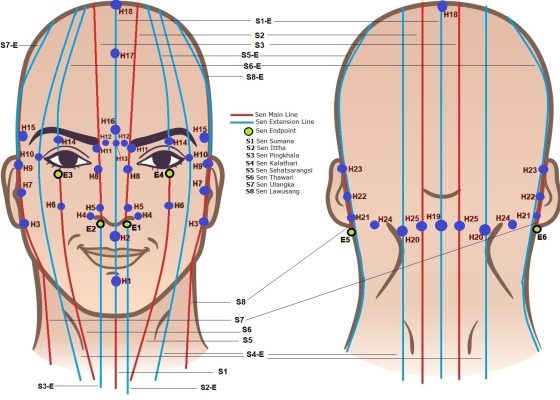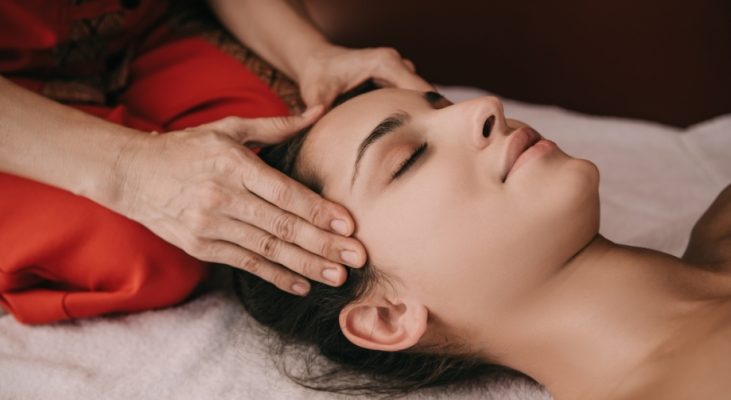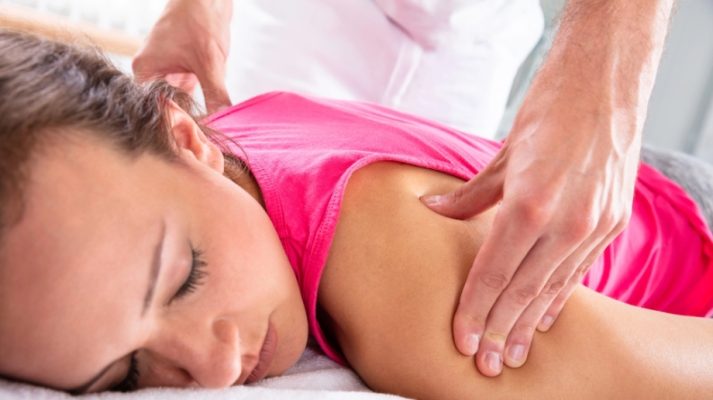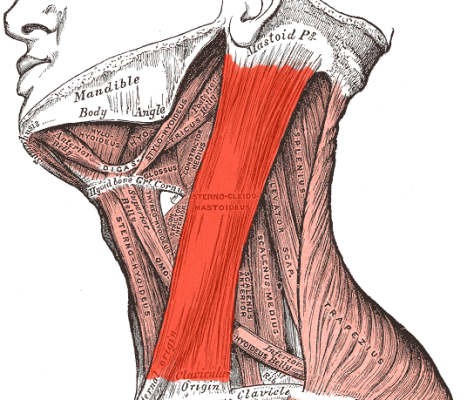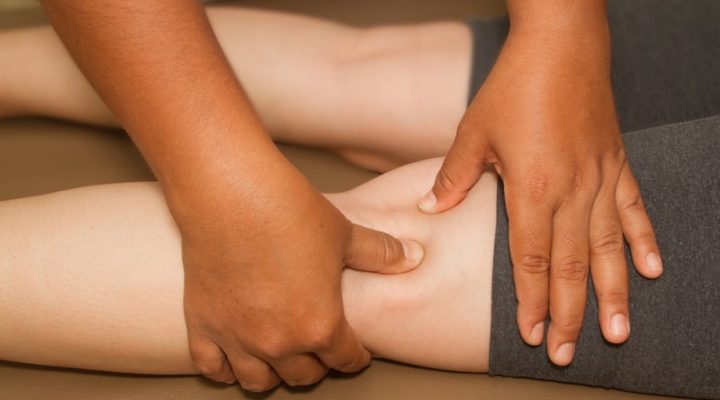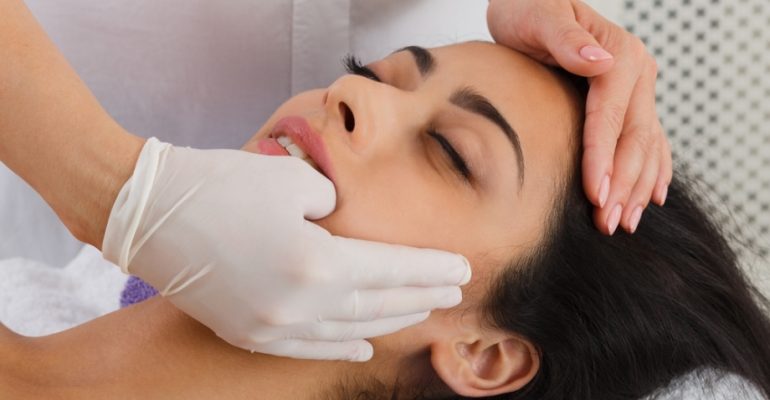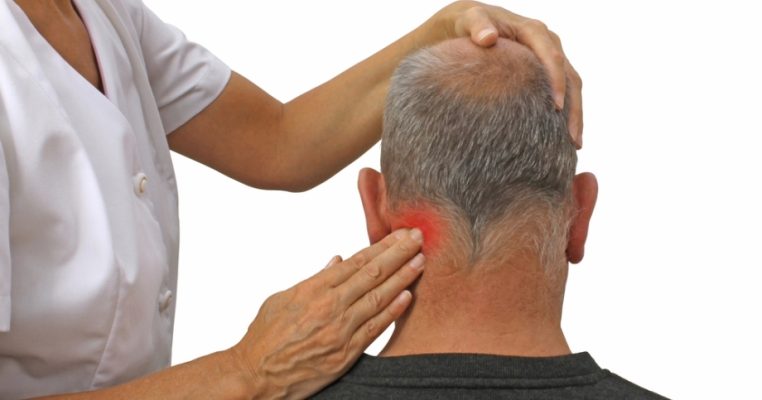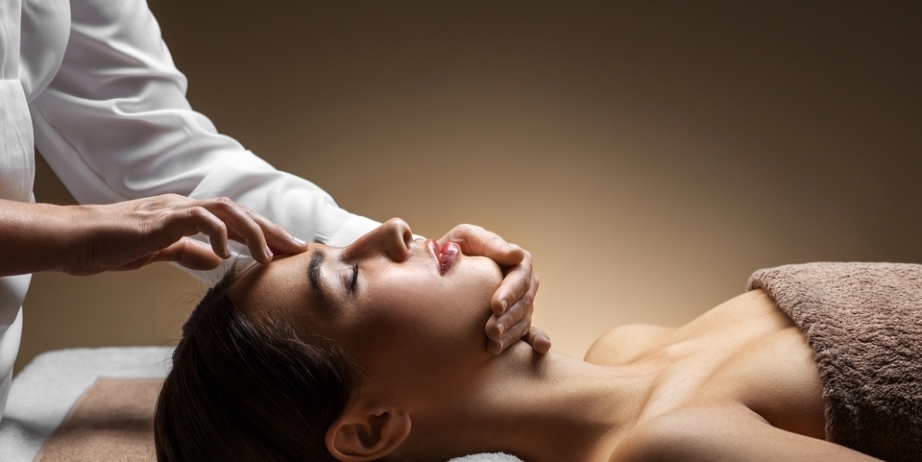
Thai Massage therapists can give targeted Thai Acupressure Therapy for the head and face by focusing on Thai pressure points that address certain health issues.
The many acupressure points of the facial and cranial area address distinct health problems, which include issues with the function(s) of the eyes, mouth, tongue, jaws, ears, nose, and respiratory system, but also headaches, vertigo/dizziness, facial paralysis, colds and sinus issues, and mental/intellectual functions (such as lucidness, concentration, memory, among others), to name a few concerns.
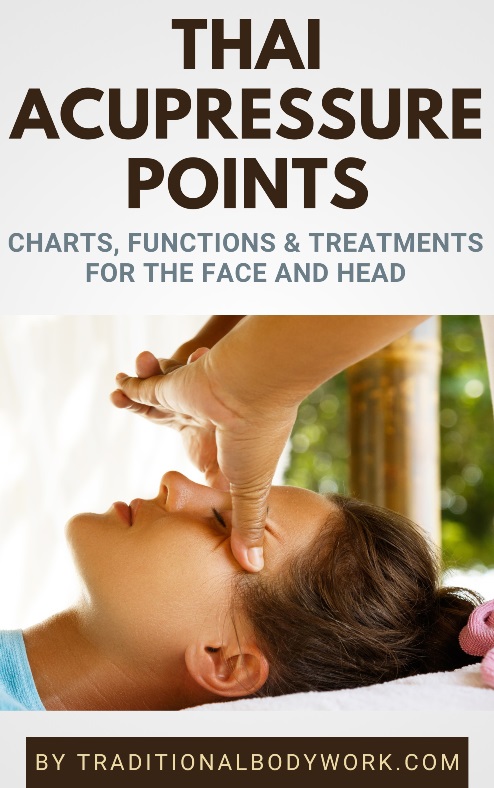
In our eBook Thai Acupressure Points – for the Face & Head, you’ll find the functions and therapeutic indications of each important pressure point of the face and head, and you can use those to design your own treatment plan. In addition, you can also use the acupressure treatment plans for particular health conditions as we’ve outlined in the section Acupressure Point Treatments in the book.
Nevertheless, keep in mind that Thai Acupressure Therapy is not just about briefly pressing a certain acupoint. As a rule you will need to press points in a sustained manner and for a while, that is, for instance for ten seconds or longer, then pausing, and repeating that type of pressure several times.
Personally, I was taught to hold the pressure on a point for about ten seconds and then to repeat that action at least three times. Moreover, after having manipulated all the relevant pressure points for a certain health concern, you would repeat the sequence one or two times (or until the points are “tired”).
But it doesn’t stop there. Typically, a patient will need to come back several times for treatment, which may be every day or every other day during a week or so, or one or two days per week for several weeks, until the symptoms of a condition have diminished or disappeared.
In addition, we should also keep in mind that the face and head are not detached from the rest of the body. Therefore, it would be advised to also treat the entirety of the relevant Sen Energy Lines, that is, the Sen Lines that contain the pressure points you treat.
And to make things complete, it’s also recommended to — now and again — include giving a Thai Full Body Massage during the treatment period. The latter is important to balance the energy flow in the body, to loosen up other possible tensions and constrictions that may affect the neck, face, and head, and to promote the blood and lymph circulation system across the entire body.
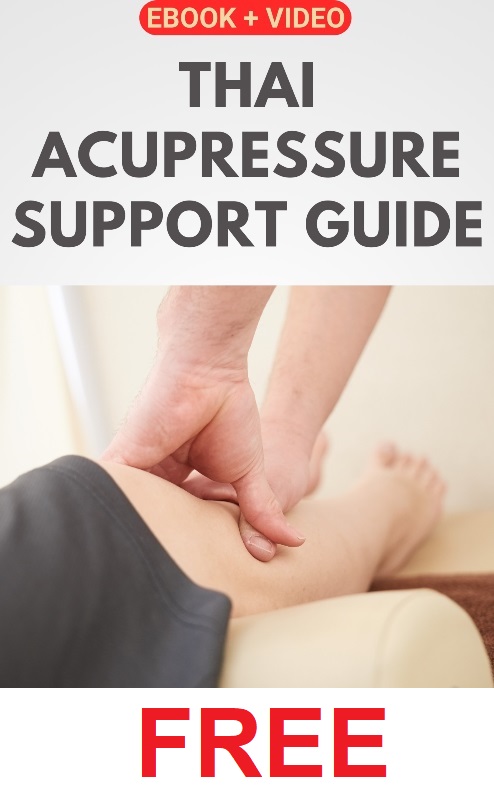
As a whole we could say that Thai Acupressure Therapy is only part of a complete Thai Massage treatment. However — just to be clear — it may certainly be the case that acupressure therapy on relevant points is all that’s needed to resolve the patient’s complaints, but usually that’s rather unlikely.
As for the techniques used, acupressure of the face and head needs a cautious approach; there are many points that are sensitive to the touch or can hurt, although there are also some points that can be pressed quite firmly (for instance, those around the mouth and at the base of the skull). So, it’s wise to go in gently with each point and first see what your patient can handle.
In Thai Acupressure treatments oils or creams are not used. However, it’s certainly not prohibited. For instance, in Ayurvedic acupressure — working with Marma Points — therapists often use specific oils or herbal pastes on the points in accordance with the patient’s Dosha-type or therapeutic indications. Nevertheless, if you plan to use oils, pastes, or creams make sure the person you treat is not allergic for its ingredients.
And finally: the face and head are delicate areas and should only be treated with the thumbs, fingers, and herbal compresses. That is, one should avoid giving acupressure with the elbows, knuckles, or with wooden acupressure sticks, and so on. And — don’t forget to have your hands cleans and your nails cut short.



